.
18.03.2016 / 20.45 MEZ
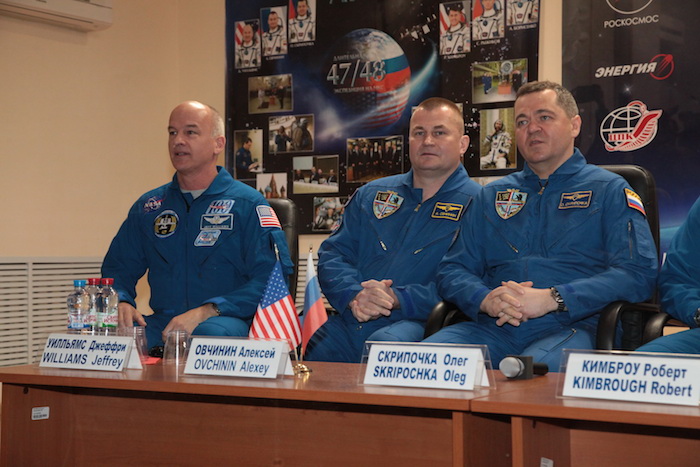
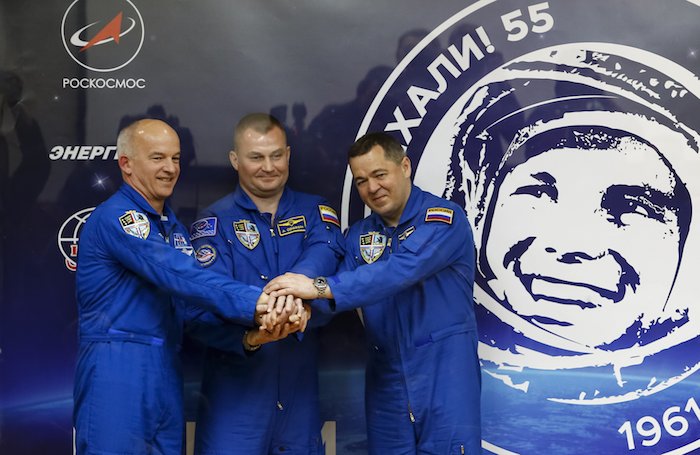
...
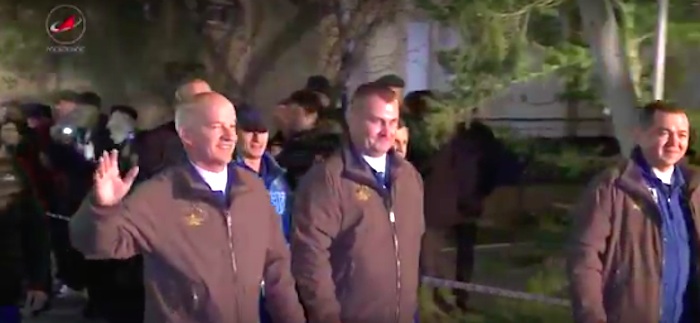

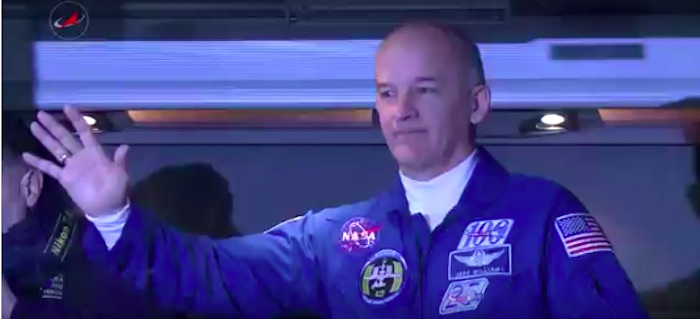
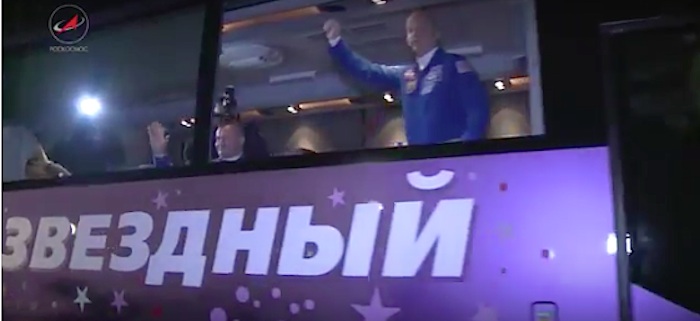

Quelle: Roscosmos
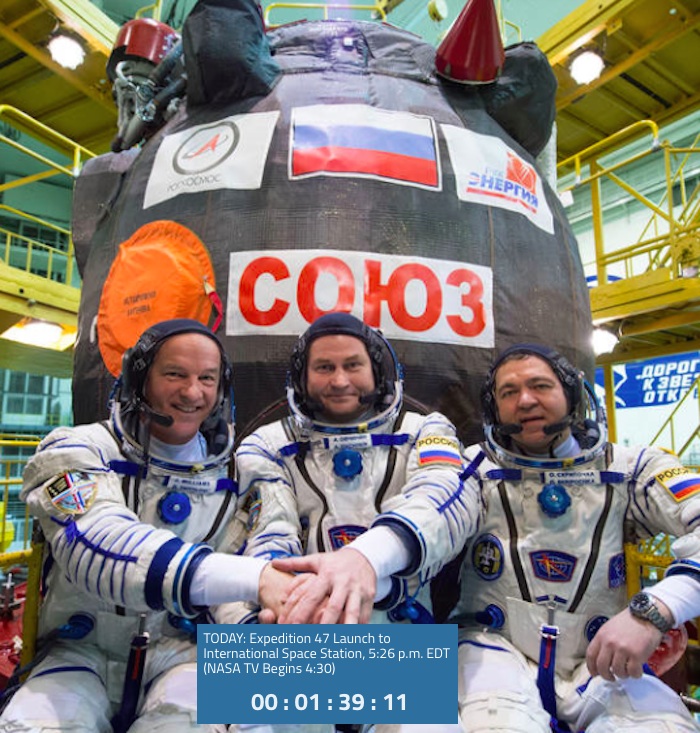
...
Update: 22.00 MEZ LIVE-Frams von NASA-TV
.
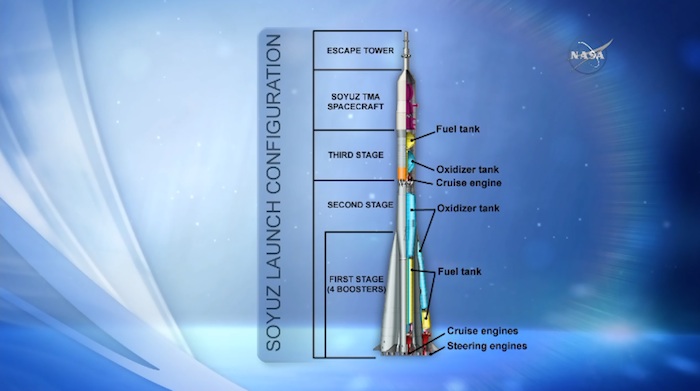
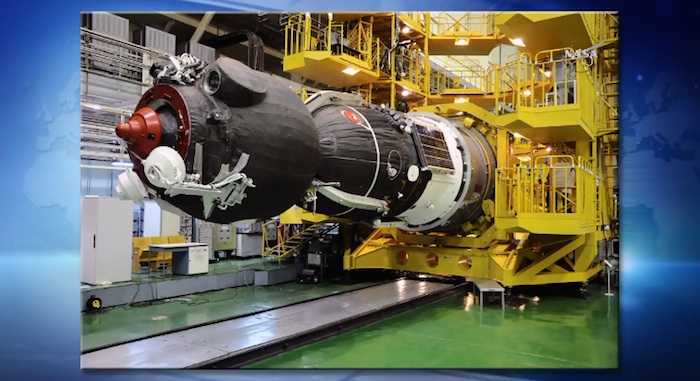
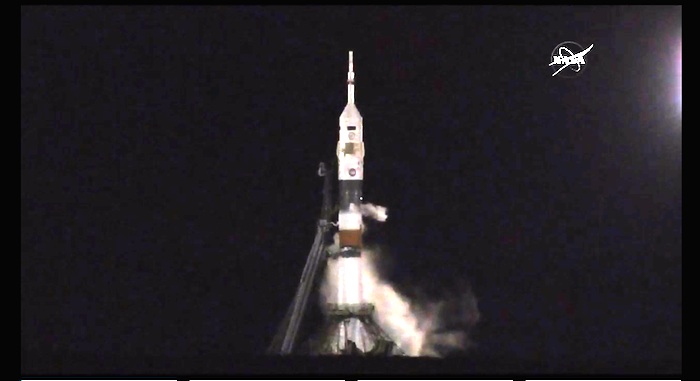
...
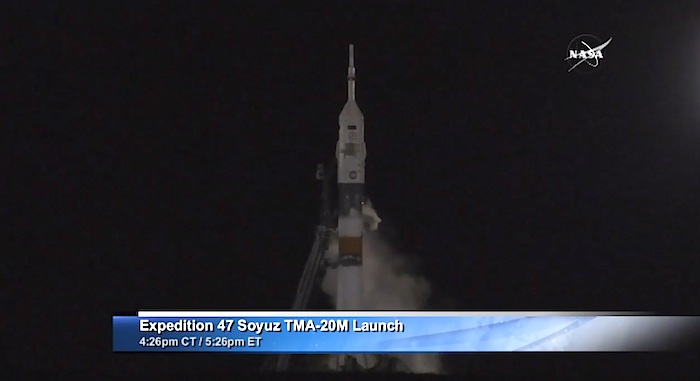
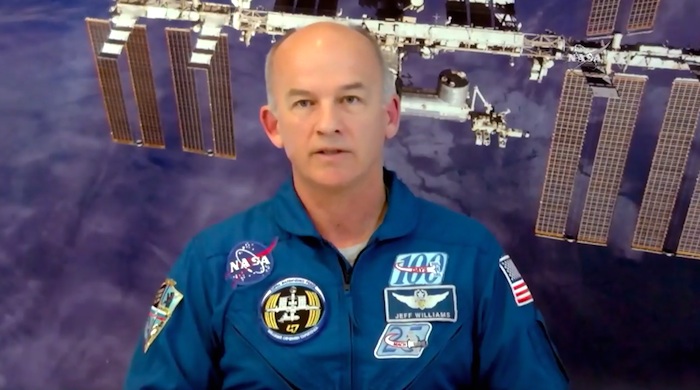
...
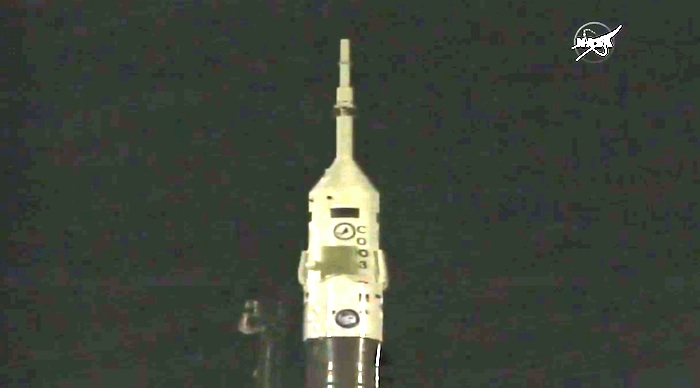
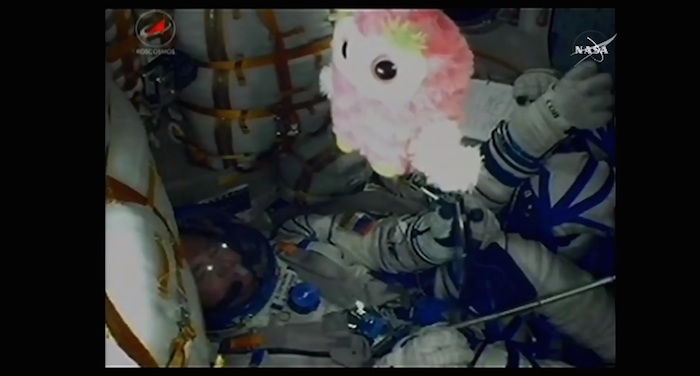
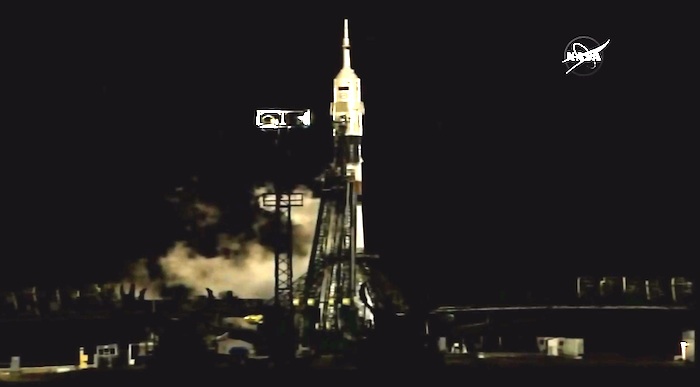
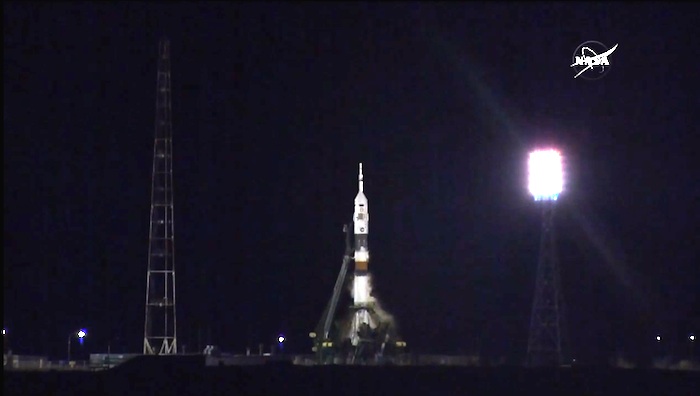
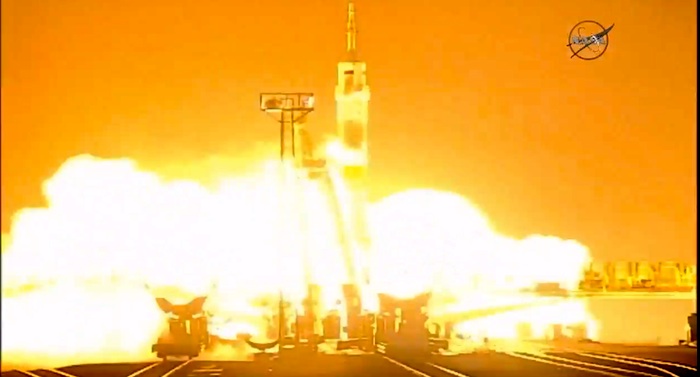
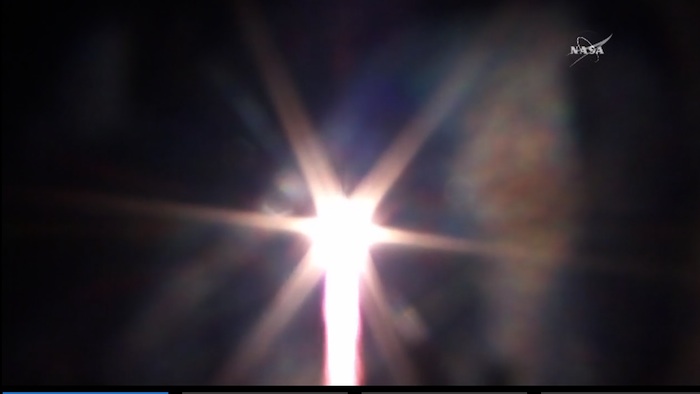
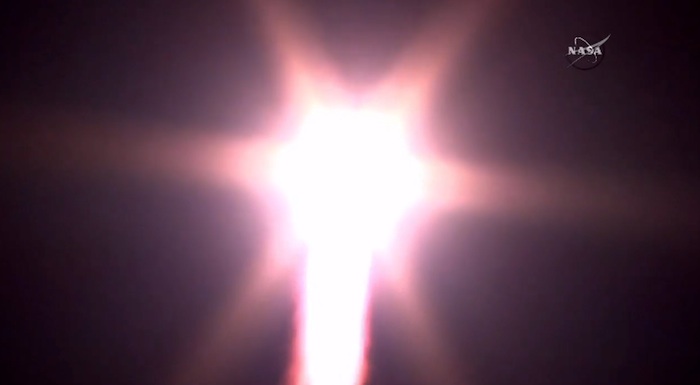
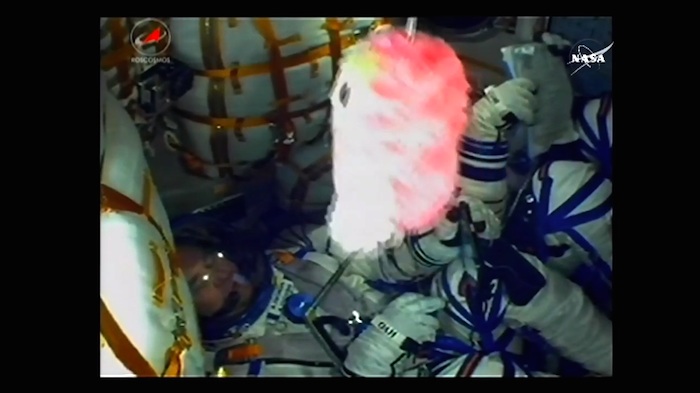
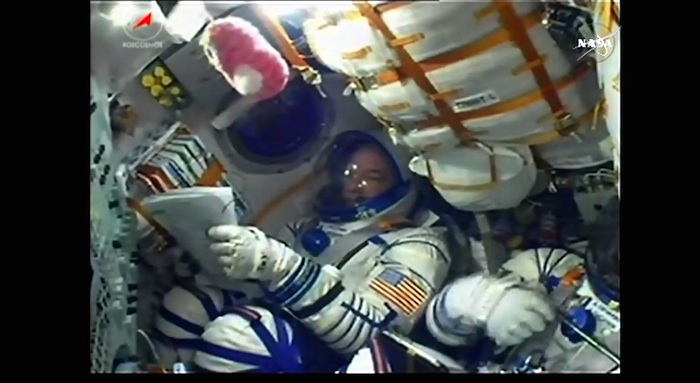
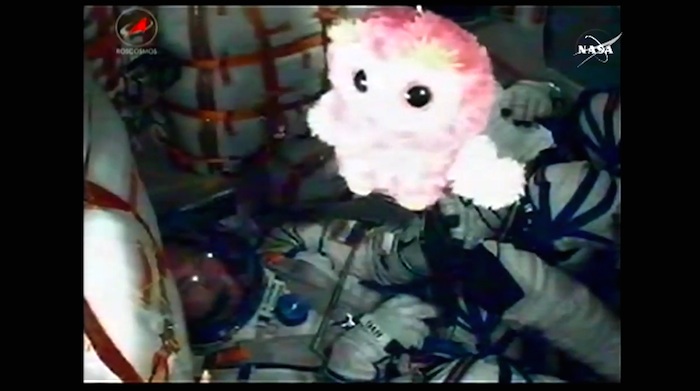
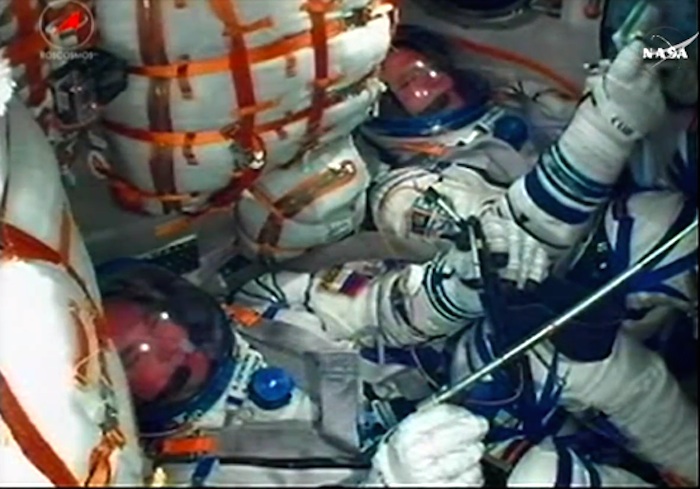
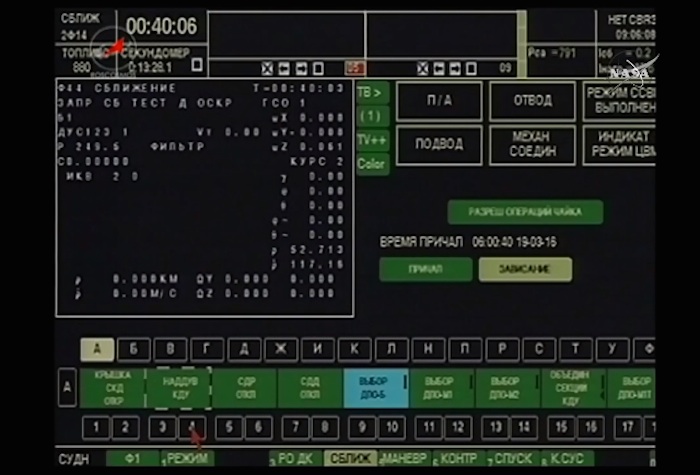
Quelle: NASA-TV
...
Update: 19.03.2016 / 8.00 MEZ
.
Launch, Docking Returns International Space Station Crew to Full Strength
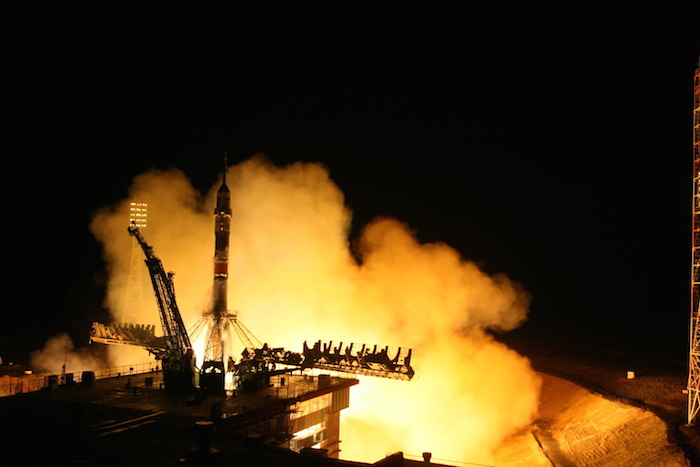
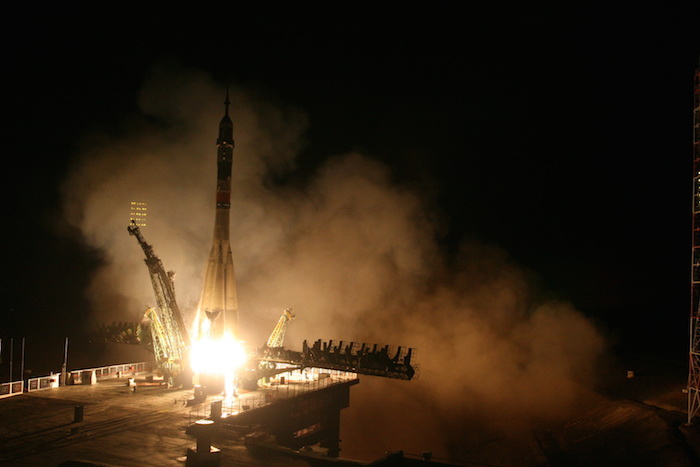
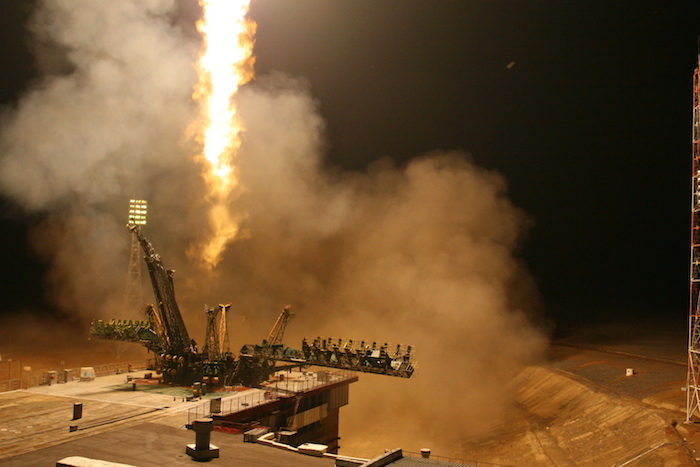
NASA astronaut Jeff Williams is now the first American to become a three-time, long-term resident of the International Space Station. He arrived at the orbiting laboratory at 11:09 p.m. EDT Friday, with cosmonauts Alexey Ovchinin and Oleg Skripochka of the Russian space agency Roscosmos, where they will continue important research that advances NASA's Journey to Mars.
The trio launched aboard a Soyuz TMA-20M spacecraft from the Baikonur Cosmodrome in Kazakhstan at 5:26 p.m. (3:26 a.m. Saturday, March 19, Baikonur time), orbited Earth four times, and docked at the station. The hatches between the spacecraft and station opened at 12:55 a.m. Saturday, March 19.
The arrival of Williams, Ovchinin and Skripochka returns the station's crew complement to six. The three join Expedition 47 Commander Tim Kopra of NASA and Flight Engineers Tim Peake of ESA (European Space Agency) and Yuri Malenchenko of Roscosmos. The Expedition 47 crew members will spend five months conducting more than 250 science investigation in fields that benefit all of humanity, such as biology, Earth science, human research, physical sciences and technology development.
Investigations arriving on Orbital ATK’s fifth NASA-contracted commercial resupply mission in late March will include a study of realistic fire scenarios on a spacecraft, enable the first space-based observations of meteors entering Earth’s atmosphere from space, explore how regolith, or soil, behaves and moves in microgravity, test a gecko-inspired adhesive gripping device that can stick on command in the harsh environment of space, and add a new 3-D printer for use on station.
Expedition 47 crew members also are expected to receive the first expandable habitat, which will allow NASA its first test of an innovative habitat concept that can support astronauts who live and work in the harsh environment of space. The Bigelow Expandable Activity Module (BEAM) is an experimental expandable module scheduled for delivery on SpaceX’s eighth NASA-contracted cargo resupply mission this spring. Although astronauts will not live in BEAM, it will be attached to the space station, expanded and tested for a minimum two-year demonstration, and crew members will enter periodically to evaluate performance of the habitat.
NASA is considering the use of expandable habitats to support crew members traveling to an asteroid, Mars and other destinations. An expandable habitat such as BEAM takes up less room on a rocket, while allowing additional volume for living and working in space.
The crew members also are scheduled to receive one Russian Progress resupply mission delivering about three tons of food, fuel, supplies and research.
During his six-month mission, Williams will become the American record holder for cumulative days in space -- 534 -- surpassing Expedition 46 Commander Scott Kelly, who wrapped up his one-year mission March 1. Williams will take command of the station on June 4 for Expedition 48. Williams, Ovchinin and Skripochka will remain aboard the station until early September 2016. Kopra, Peake and Malenchenko will return to Earth on June 5.
For 15 years, humans have been living continuously aboard the International Space Station to advance scientific knowledge and demonstrate new technologies, making research breakthroughs not possible on Earth and that will enable long-duration human and robotic exploration into deep space. A truly global endeavor, more than 200 people from 15 countries have visited the unique microgravity laboratory that has hosted more than 1,700 research investigations from researchers in more than 83 countries.
Quelle: NASA
-
Soyuz docks with space station with fresh crew
A Russian Soyuz spacecraft carrying two cosmonauts and a veteran NASA astronaut blasted off from Kazakhstan Friday, chased down the International Space Station and glided to a smooth automated docking, boosting the lab’s crew back to six.
After trouble-free countdown, the Soyuz TMA-20M/46S booster’s main engines roared to life at 5:26:38 p.m. EDT (GMT-5), spun up to full power and smoothly pushed the rocket away from launch pad 1 at the Baikonur Cosmodrome, the same pad used by cosmonaut Yuri Gagarin at the dawn of the space age more than five decades ago.
Liftoff came just a few minutes after the space station passed 251 miles directly above the sprawling spaceport and the Soyuz climbed directly into the plane of the lab’s orbit, setting up a four-orbit rendezvous.
Live television views from inside the central command module showed rookie commander Alexey Ovchinin, strapped into the capsule’s center seat, flanked on his left by flight engineer Oleg Skripochka and on his right by NASA astronaut Jeffrey Williams, all appearing relaxed as they monitored their flight plans and cockpit displays.
Eight minutes and 45 seconds after liftoff, the booster’s third stage shut down, the Soyuz spacecraft separated and a few moments after that, flight controllers reported the spacecraft’s antennas and solar arrays had deployed and locked in place as planned.
“Enjoy yourself, and take very good care of the space station for us,” Bill Gerstenmaier, director of space operations at NASA Headquarters, told the crew shortly before launch.
Initially trailing the space station by less than a thousand miles, Ovchinin monitored an automated approach to the laboratory, docking at the upper Poisk module a few seconds before 11:10 p.m.
Standing by to welcome them aboard, after leak checks to verify a tight seal, were Expedition 47 commander Timothy Kopra, British astronaut Timothy Peake and cosmonaut Yuri Malenchenko, who were launched to the outpost aboard the Soyuz TMA-19M/45S ferry ship on Dec. 15.
They’ve had the station to themselves since astronaut Scott Kelly, fellow long-duration crew member Mikhail Kornienko and Soyuz TMA-18M commander Sergey Volkov departed and returned to Earth March 1.
.
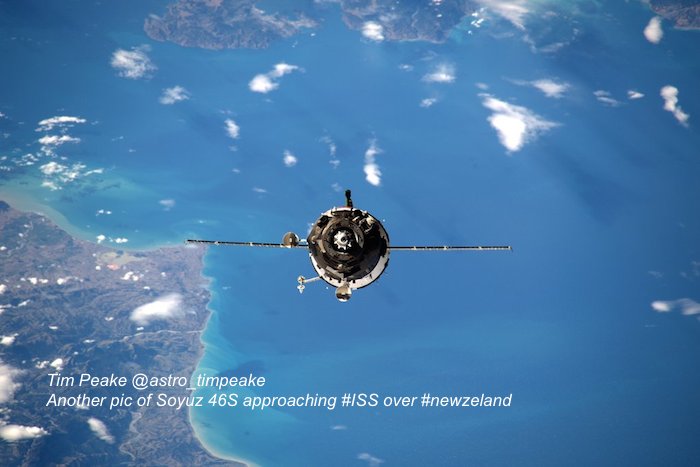
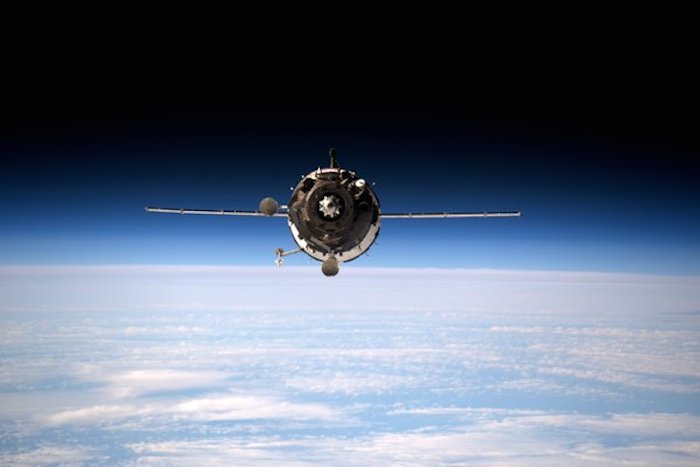
The Soyuz TMA-20M spaceship approaches the International Space Station. Credit: NASA/ESA/Tim Peake
Kelly set a new record for longest single flight by a U.S. astronaut — 340 days — and the most cumulative time in orbit, 520 days over four flights. But Williams, veteran of a shuttle flight in 2000 and two six-month stays aboard the station in 2006 and 2009-10, will set a new NASA record for total time aloft — 534 days — when he returns to Earth Sept. 6
Williams served as Kelly’s backup for the just completed, nearly-yearlong mission, setting the stage for his fourth spaceflight.
“I didn’t expect, realistically, to fly again,” Williams said in an interview. “It was really the one-year flight that put me back in the queue.”
NASA was looking for volunteers for the long-duration flight and after his wife agreed to another long separation, Williams threw his name in the hat.
“It ended up a very small number of (volunteers), which included Scott Kelly,” he said. “Scott got the prime, I got the backup. I was happy with that arrangement, but that’s what put me in the pipeline to go back again.”
Williams, a West Point graduate, military parachute jumpmaster and test pilot with more than 3,000 hours flying time, said he focused primarily on refresher courses to get him back up to speed on current systems aboard the station.
Skripochka, with a degree in mechanical engineering, also is a station veteran, logging 159 days aboard the lab in 2010-11. Ovchinin is making his first flight.
“What prompted me to become a cosmonaut, it was other Russian cosmonauts, because after every launch and landing there was wide coverage on Russian TV and in Russian newspapers and it was presented in such a way I really wanted to become a cosmonaut,” he said before launch. “I made my decision when I was about seven or eight years old.”
While his flight is the “fulfillment of my lifelong dream,” Ovchinin said his wife and eight-and-a-half-year-old daughter “are concerned because I’m flying into space.”
“But this is the way I have chosen, and I’m going to continue on this path,” he said. “They’ll just have to put up with it!”
.
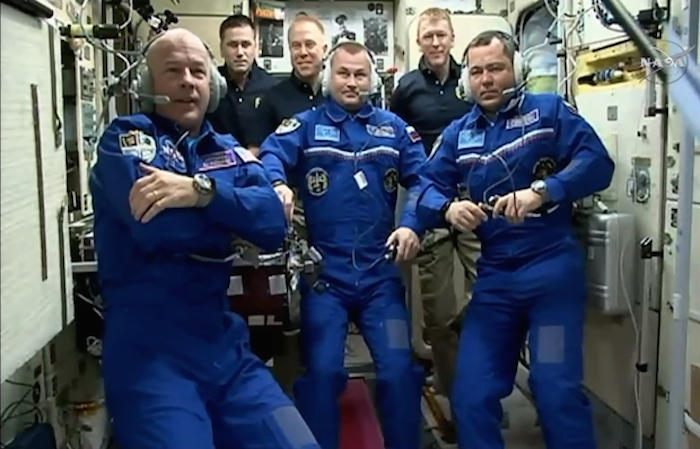
The six-person Expedition 47 crew during a welcome ceremony aboard the space station’s Zvezda service module after docking.
The combined station crew faces an especially busy first few weeks in space. Orbital ATK plans to launch a Cygnus cargo ship atop an Atlas 5 rocket Tuesday night from Cape Canaveral that will deliver more than 7,000 pounds of supplies and equipment.
A Russian Progress supply ship is scheduled for launch from Baikonur on March 31, followed by launch of a SpaceX Dragon cargo capsule from Cape Canaveral on April 8 that will deliver an experimental inflatable module that will be attached to the station’s Tranquility module.
The Bigelow Expandable Activity Module, or BEAM, supplied by a company owned by motel magnate Robert Bigelow, could offer a low-cost approach to building commercial space stations or habitats for deep space missions.
“We’re very excited anticipating the BEAM coming up on SpaceX and deploying it as an experiment,” Williams said. “BEAM is a technology demonstration. It’s an inflatable module, so it’s volume is smaller when it launches than when it’s utilized in space. It takes less room, and that technology has great promise for the launching of future spacecraft.”
Kopra, Peake and Malenchenko are scheduled to return to Earth June 5, leaving Ovchinin, Skripochka and Williams behind as the core of the Expedition 48 crew. Kopra and his crewmates will be replaced by cosmonaut Anatoly Ivanishin, Japanese astronaut Takuya Onishi and NASA astronaut Kate Rubins, scheduled for launch aboard the Soyuz MS-1 spacecraft on June 21.
The Russians plan to launch another Progress freighter July 4 while both SpaceX and Orbital ATK plan resupply missions of their own within a few days or weeks of the new crew’s arrival.
The SpaceX Dragon, making the company’s ninth operational resupply flight, will deliver a particularly critical component: the first of two docking adapters needed by commercial crew ferry ships being built by SpaceX and Boeing.
An international docking adapter, or IDA, was destroyed in a SpaceX launch failure last June. The one going up next June, and another now being built by Boeing to replace the one lost last year, will be mounted on the front and top of the station’s forward Harmony module. Operational flights by Boeing and SpaceX are expected to begin in late 2018.
Quelle: SN
-
Update: 15.00 MEZ
.
Ankunft von ISS-Crew-47
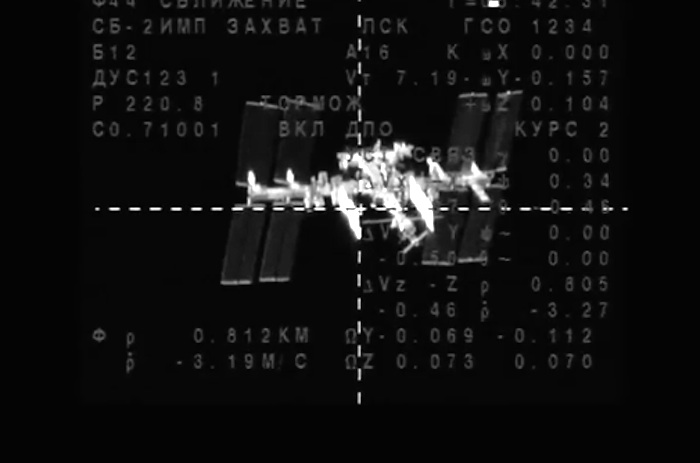
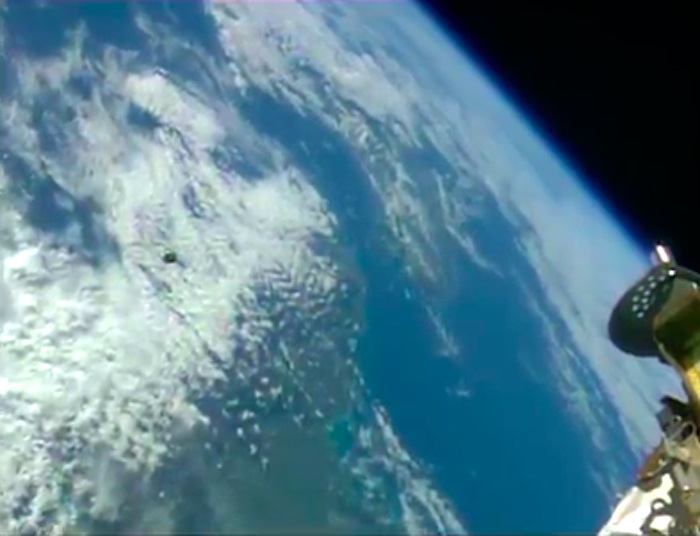
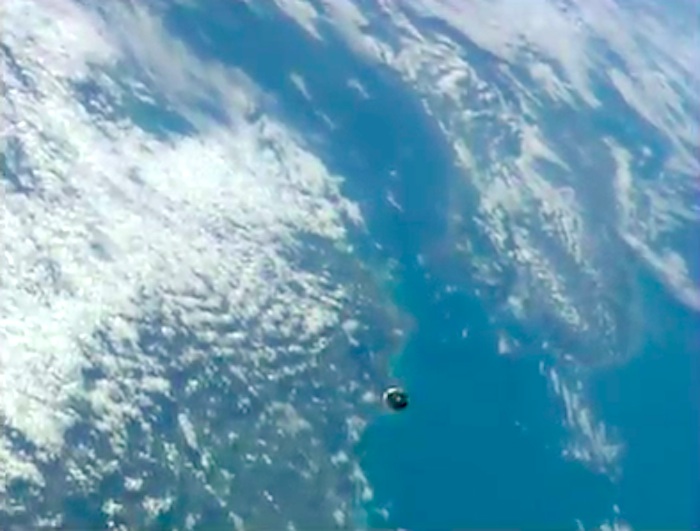
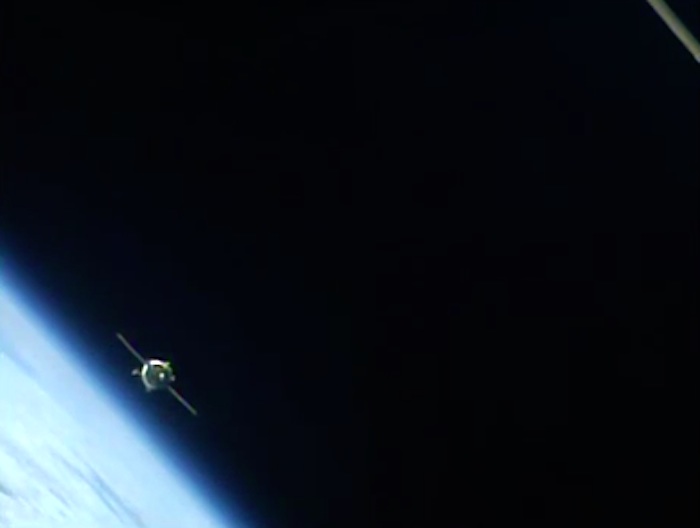
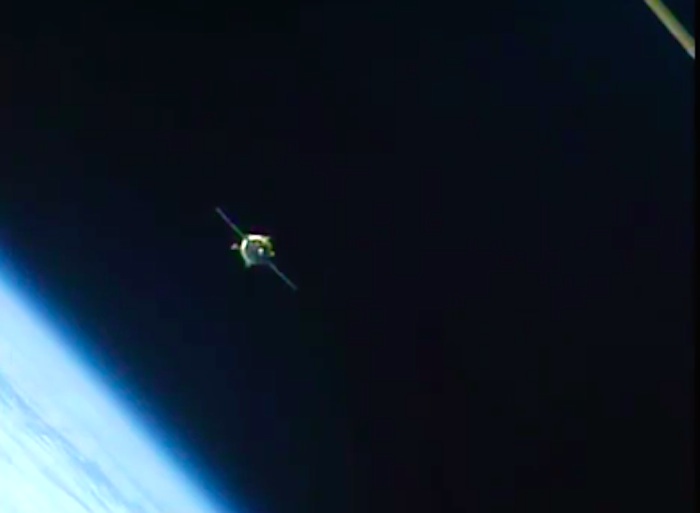
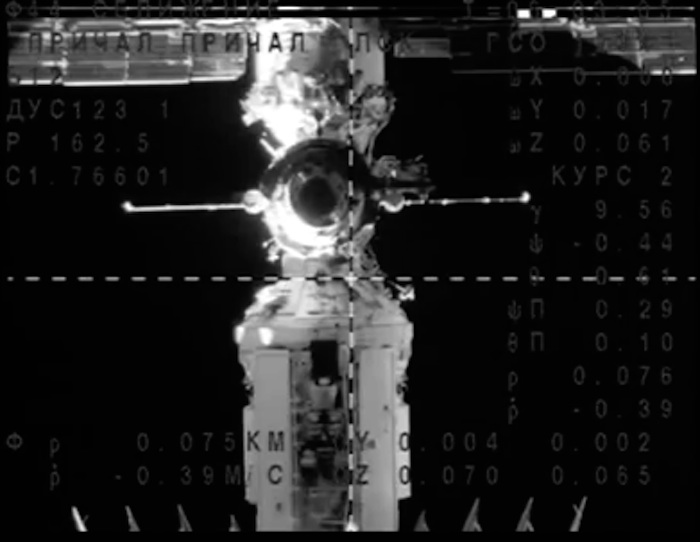
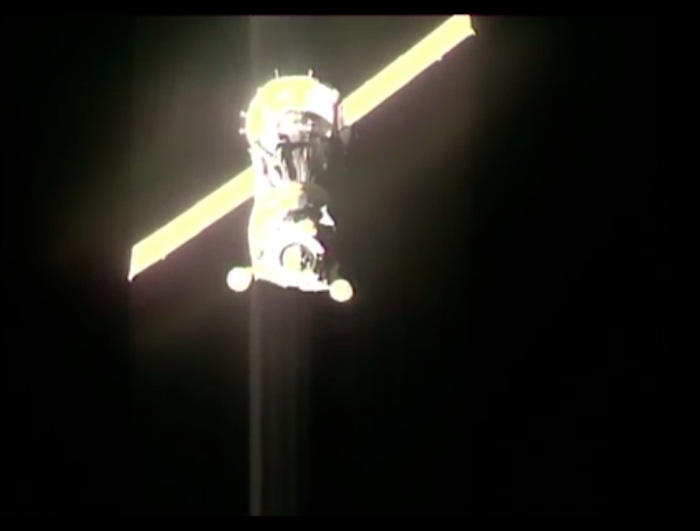
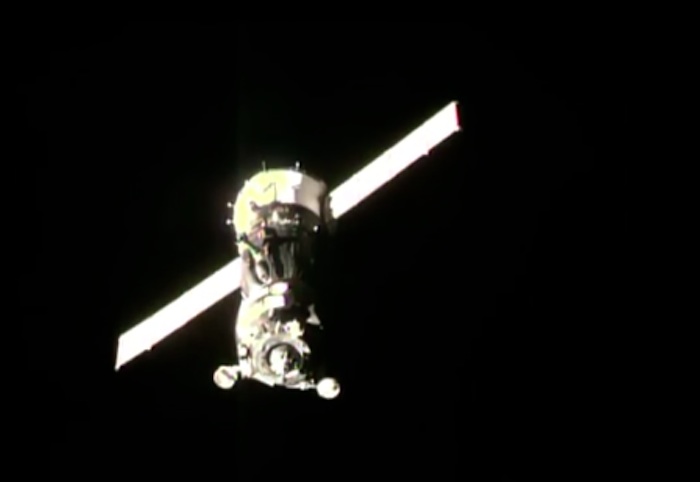
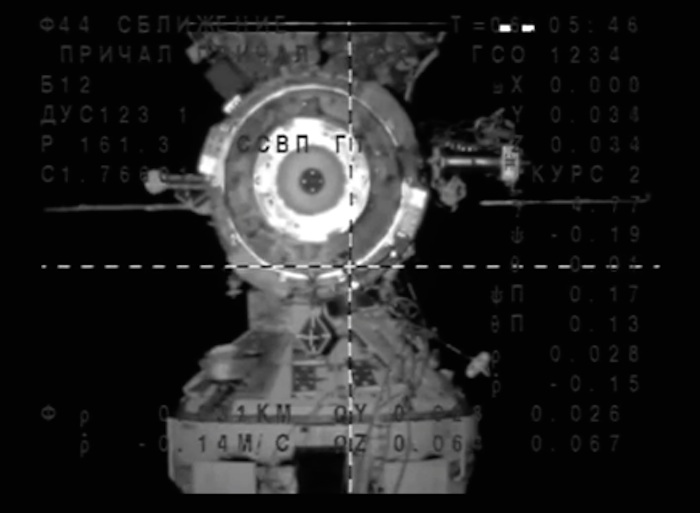
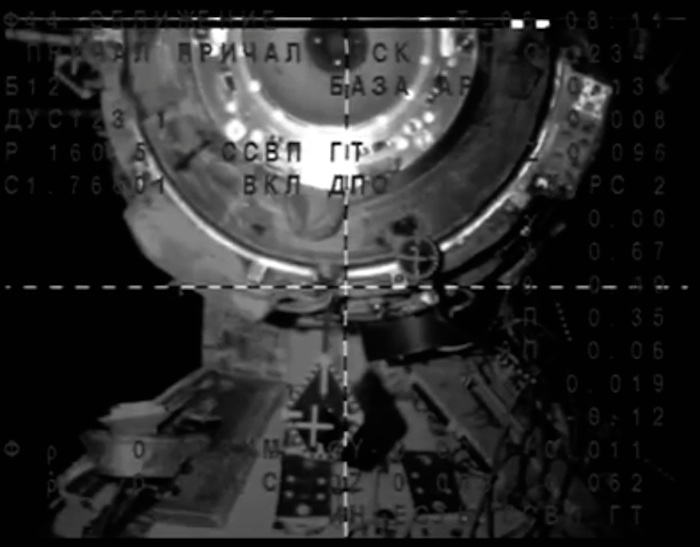

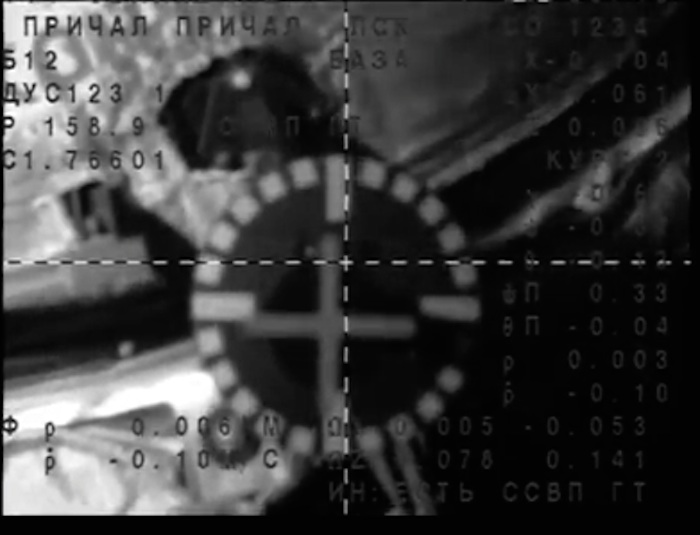
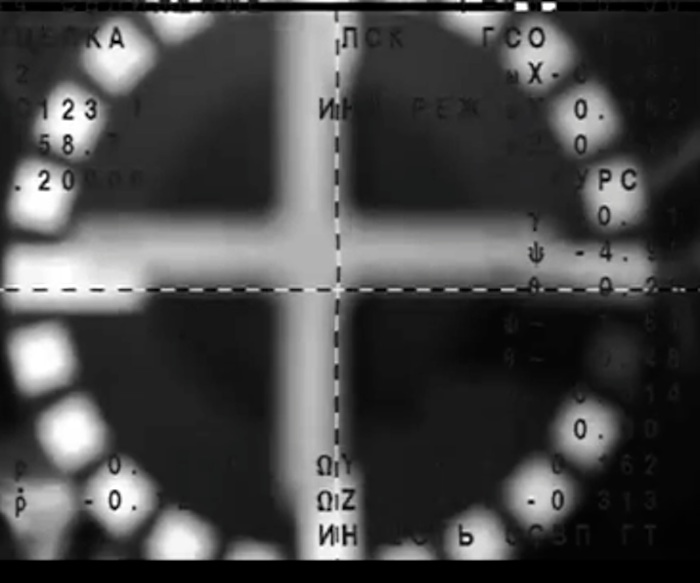
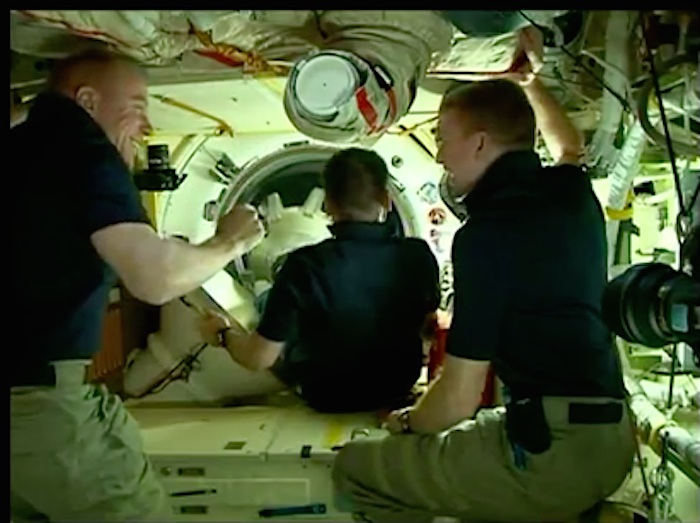
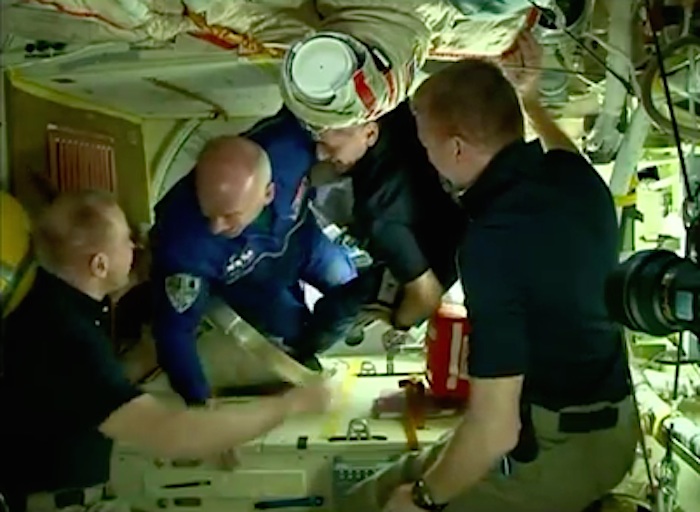
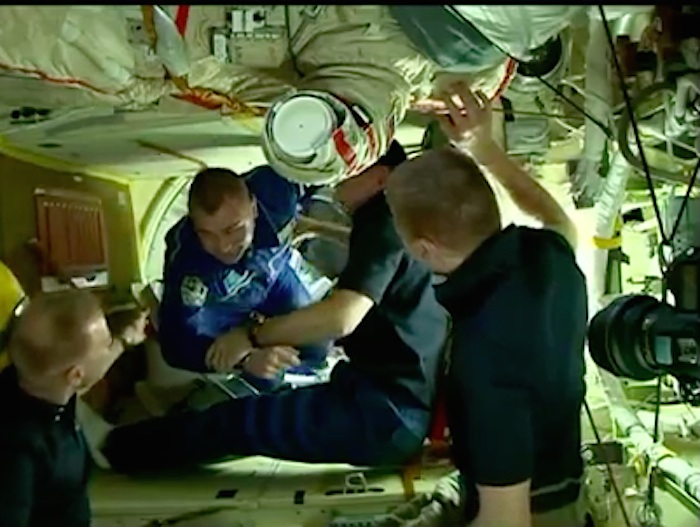
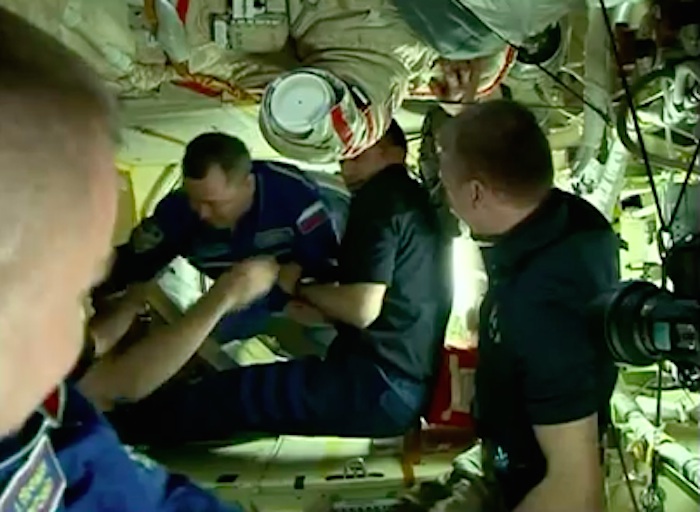
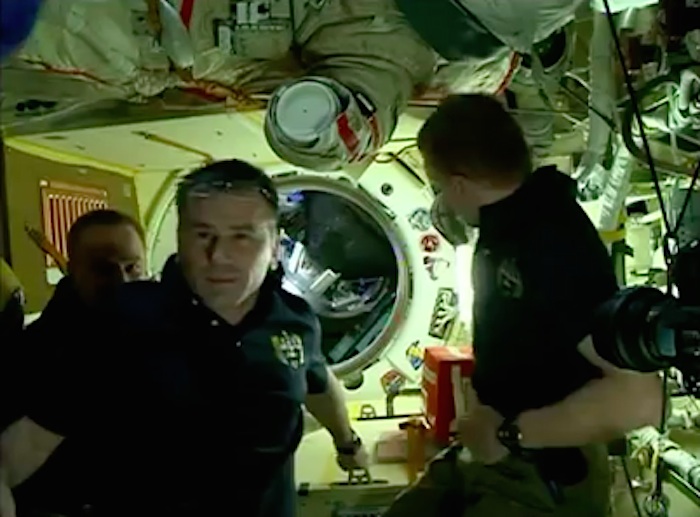
Quelle: NASA-TV
3916 Views
